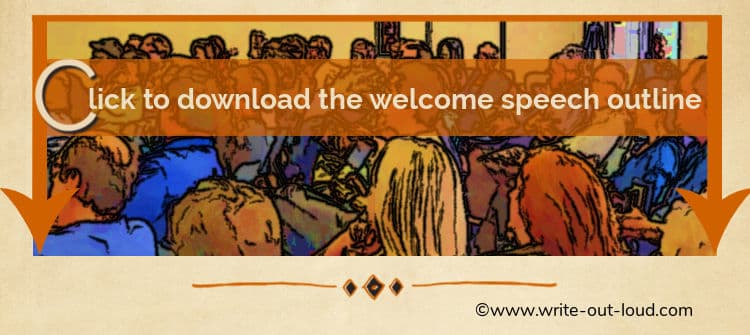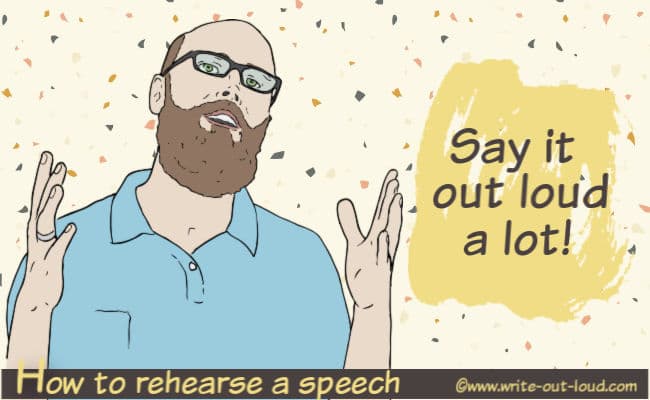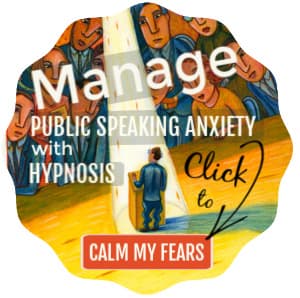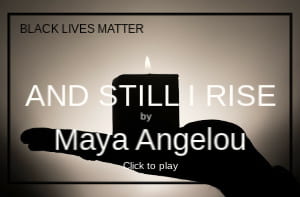- HOME ›
- Speech examples ›
- Welcome speech
How to write a welcome speech in 3 steps
With a printable welcome speech planner, outline and a sample welcome speech
By: Susan Dugdale
So, you've been asked to give a short welcome speech for an event. Congratulations! And now you want to be doubly sure you get it right. The right content. The right tone. Plus, the right length!
You'll find everything here you need to do that easily, from start to finish.
Jump in. You are just three steps away from a completed welcome speech. Shall we start?
How to write a welcome speech in 3 steps
The fastest and best way to get your speech done is to:
- skim read this page to get an overview of the speech writing process, (the welcome speech template and the planner you're going to use), to read the example welcome speech, and to find out more about the function of a welcome speech and the importance of its tone.
- then download, print and complete the welcome speech planner.
- and lastly, use the notes you made in the planner to write your welcome speech. To help with that, you can download and print the outline of my example welcome speech to use. Edit, and add your information to make the speech your own.
The welcome speech template
To be effective your welcome speech needs to meet expected, as well as any specific, requirements dictated by the occasion.
The 6 standard welcome speech content ingredients
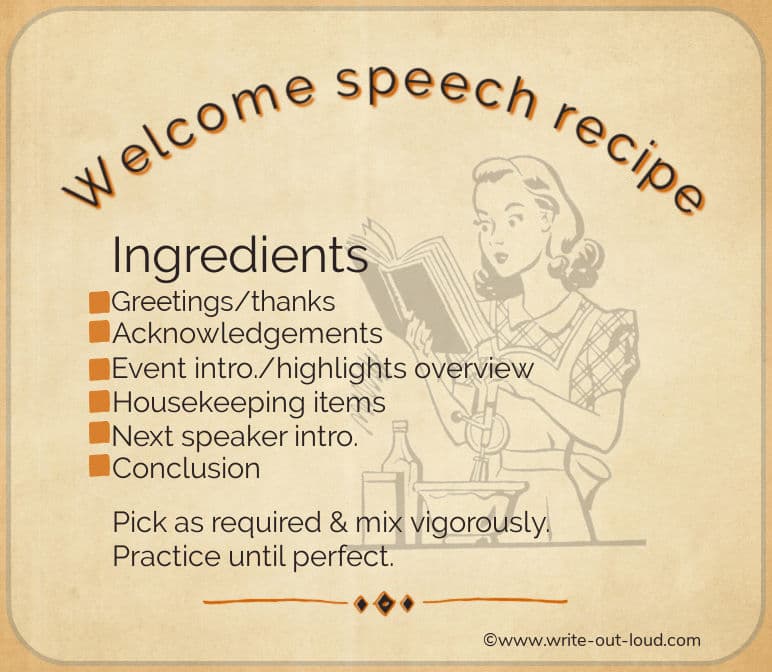
There are six common or standard content items in a good welcome speech.
These are:
- Greetings to welcome everyone and thanking them for coming along.
- Acknowledgement of special guests, if there are any.
- An introduction of the event itself and a brief overview of special highlights the audience will want to know about.
- Any important housekeeping information, for instance: where the bathrooms are, where lunch will be served and when...
- An introduction for the next speaker, if there is one.
- Thanking everyone for coming once more and then concluding having made everybody feel at ease, eagerly anticipating what is to come.
Numbers 1, 3, and 6 are basic essentials you cannot do without. Numbers 2, 4 and 5 may, or may not, be applicable. Pick what you need from them to fit your occasion.
Short sample welcome speech for a conference
Now let's put all six ingredients into an example of a short welcome speech to open a conference that you can adapt for your own speech.
*(This speech is pure fiction! I made it up to show you how it's done. You'll see its tone is formal rather than informal to fit the occasion. I don't think there is a group called Parents United. However, there are others with a similar mission:10 Inspiring Organizations that Promote Literacy and Education.)
Example welcome speech - "Readers by Right"
"Sue-Ellen Thomas, Jim Smith, Jane Brown and all of our guests, good morning!
My name is April Molloy, and it's my privilege and great pleasure on behalf of Parents United to welcome you all here today.
We are delighted to have you with us to participate and share in this special occasion, our 5th annual Children's Day Conference. Thank you for coming. That many of you have willingly traveled long distances to be here serves as a reminder to us all just how important our work is.

Parents United is committed to actively raising the quality of life for every child. We want all children, regardless of race, creed or circumstance to achieve their full potential. Our task is to make it possible. Our mission is to provide practical, step by step assistance.
This year our theme is literacy. We've named the day 'Readers by Right'.
Thanks to the 1948 United Nations Universal Declaration of Human Rights, we are aware of 'rights' in many spheres, including education. Article 26 declared it should be compulsory and free for children.
That goal is as pertinent today as it was then. And it's a goal I know we all share - the full development of every child. As a body, Parents United recognizes good reading skills established in childhood as the foundation of fulfilling, and ongoing education.

We are honored to have Sue-Ellen Thomas, Jim Smith and Jane Brown with us today. All three are esteemed specialists in teaching young children to read.
Sue-Ellen has worked for a long time with educational authorities to establish programs putting in place necessary pre-reading skills. Her hard work needs no introduction. The results speak for themselves.
Jim and Jane bring their passion, and knowledge of how to reach those in our communities who are frequently overlooked or bypassed. Their work among disadvantaged English-as-a-second-language families has bridged gaps that were deep dark chasms.
Prepare yourself to be challenged, excited and inspired.
And before I handover to Lesley Watts, our coordinator for 'Readers by Right', who will outline the day's various events, I want to say once more on behalf of the Parents United organizing committee, welcome. It's wonderful to see so many of you here."
Get your welcome speech started
To shortcut wondering, "Should I say this?" or "Maybe I should say that?" and "Then again there's also ...", I have a very simple solution for you.
Get yourself a printable welcome speech planner
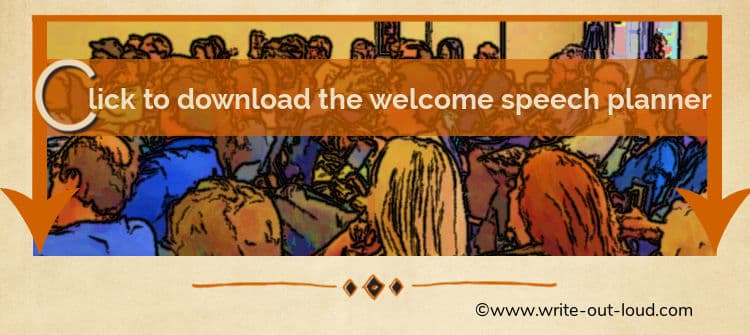
Download and print my special greeting address planner.
It covers ALL the necessary ingredients that go into preparing a successful welcome speech. It's simple to use and easily filled out. Once it's done, writing your speech will be a lot less hassle as you'll have the core content ready to work with.
Writing your welcome speech
Tips to help you get your speech right
When you're entering information into your speech planner:
- ensure you've got all the names of individuals or special guests you need to mention specifically and, that you know how to pronounce each of them. Also check that you know and use their preferred pronouns: them/they, she/her, he/him...
- double check the remarks you're going to make about them, or anything else, are factually correct.
Use your introduction of your guests/or the event, as a "teaser" for what is going to come. It will help create anticipation in the audience. Don't ruin it by giving too much away! Just enough to tempt and no more.
Keep it brief. One to two minutes is generally sufficient.
(The word count of my sample welcome speech is 357. It will take approximately 2 minutes to say.)
Use the S-S-S formula for success: Short, Simple and Sincere. Your listeners will appreciate it.
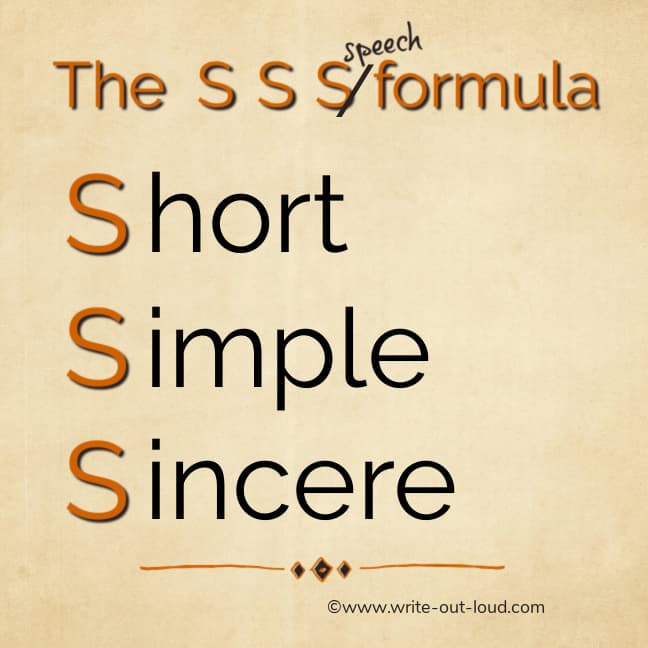
Get a printable welcome speech outline
If you would like to use and adapt the structure I used in my sample speech as the foundation for your welcome speech, click the link to download the printable: welcome speech outline.
Then edit; delete, amend and add, until you are done.
Get a hand with vocabulary
If you're stuck for words, here's a large selection of adaptable welcoming phrases with example sentences. Reading through them could help you to find exactly what you want.
What does a good welcome speech do?
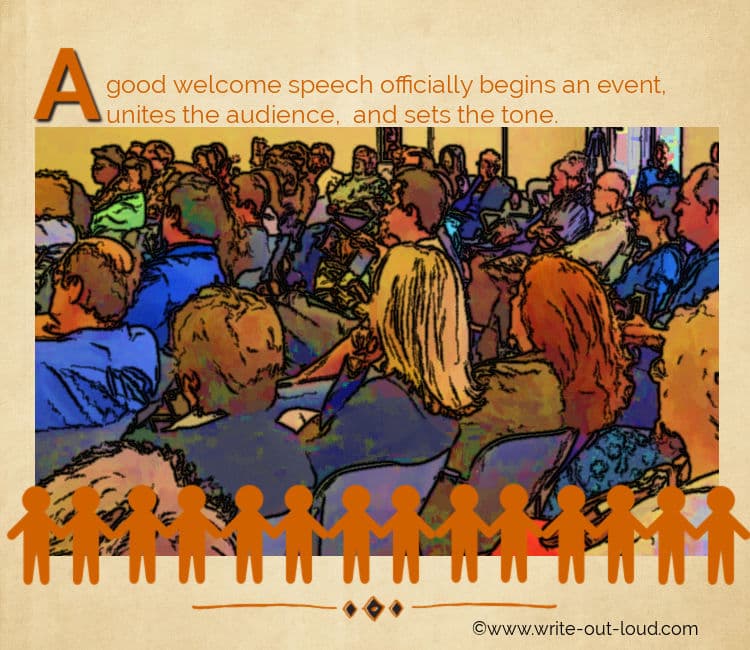
An effective welcome speech has three important functions. It:
- signals the official beginning of an event. It says to the audience, hush, sit down, stop talking and listen. What you came for is starting!
- sets the tone for the occasion through the choice of language used.
For example, using light-hearted and informal words to welcome guests to a dear friend's birthday party may be completely appropriate.
However, the same type of language to welcome family and friends to a memorial service is unlikely to be. In that setting, people generally expect a more solemn and formal word choice. They could be deeply offended and think the use of casual language is disrespectful.
Understanding and getting tone right is a key element in the overall success of your welcome speech.
- unites the audience. It draws everyone together in the common purpose at the heart of the occasion.
For example, at a birthday party, the welcome speech invites everyone to join in celebrating the person whose birthday it is.
The welcome speech opening a specialist conference will affirm its principal purpose: the coming together of people with mutual interests to meet and share new knowledge.
Or if a welcome speech is given to newcomers in a workplace, club or educational setting, its purpose is to give an introductory overview of how things work to help them feel more at ease in their new situation - to help them develop a sense of belonging.
Getting the tone right for an event
What is tone?
Tone is the combined impact of the words chosen to express something, with how they are structured and, delivered. All three elements come together to create tone*.
Get tone wrong, and your welcome speech is a disaster.
Get it right, and it's a triumph!
(Yes, that's hyperbole but I'm sure you get the idea. ☺)
*Tone - a mood, quality or feeling
How to choose the right words
The beginning of getting tone right is to think about your audience and the event itself. Your goal is to unite and bring them together in the main purpose at the core of the occasion. What type of language will do that most appropriately and easily?
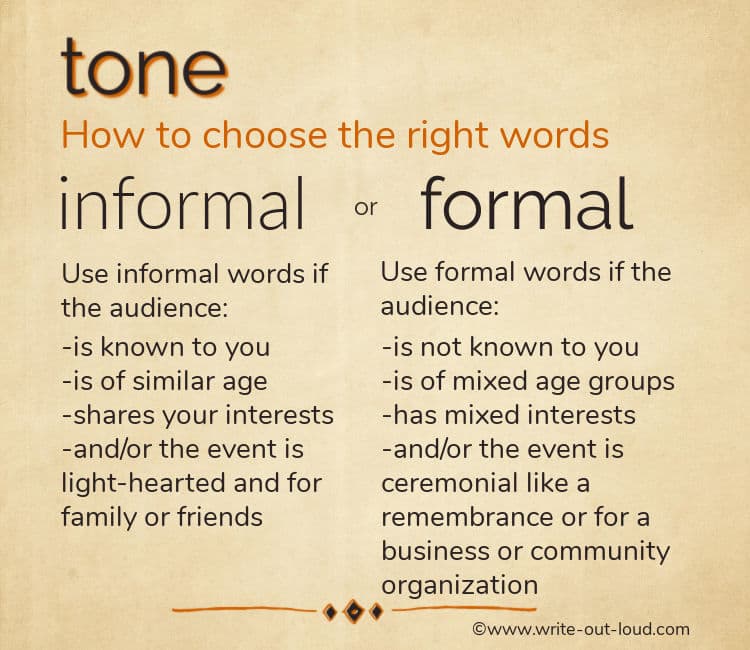
To answer that question, think about the common interest everybody shares - the principal reason behind them getting together. It will help guide your language choice.
Is it a fun event like a birthday party for close friends and family? If so, then informal language is likely to be the most apt.
You might hear something along the lines of: "Well, here we all are! The big day has finally arrived. Jean-Marie is 50! Half a century! How on earth did that happen?"
If it's a remembrance service for someone who has recently died, the language you're likely to hear is more formal.
For example: "Friends, family, colleagues, thank you for joining us today to celebrate and give thanks for our dear Jean-Marie. Your presence is gratefully appreciated."
What is appropriate? What is expected? Do spend some time thinking tone through. Misunderstanding and getting it wrong can be very embarrassing for everyone. If in doubt, ask someone whose opinion you trust.
Related helpful pages
Help rehearsing your welcome speech
Get step by step instructions on how to rehearse including how to make and use cue cards.
And please do rehearse. It makes a huge difference! You'll sound, and look better. Taking the time to rehearse shows respect for yourself, the audience and the event. Truly.
Help to manage pre-speech jitters
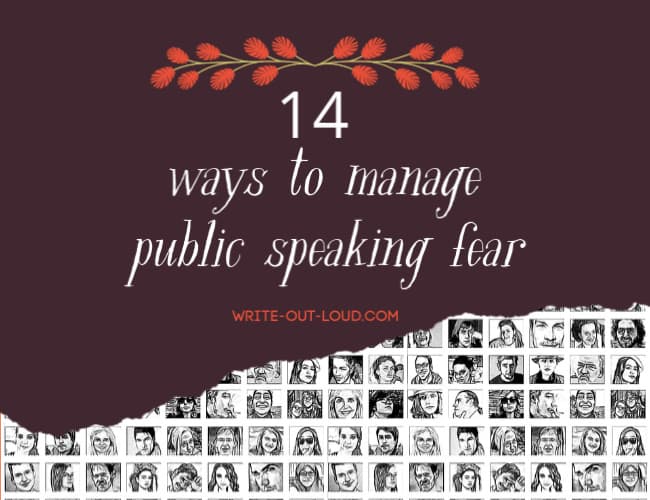
Nervous? If you're shaking in your boots at the thought of having to speak in front of an audience, click overcoming public speaking fear for assistance. Take your time. The page has 14 tried and tested suggestions to consider.
Help with other types of welcome speeches
Or perhaps you need welcome to the family speeches or a church welcome speech sample? Click the links to find easily adaptable examples.
